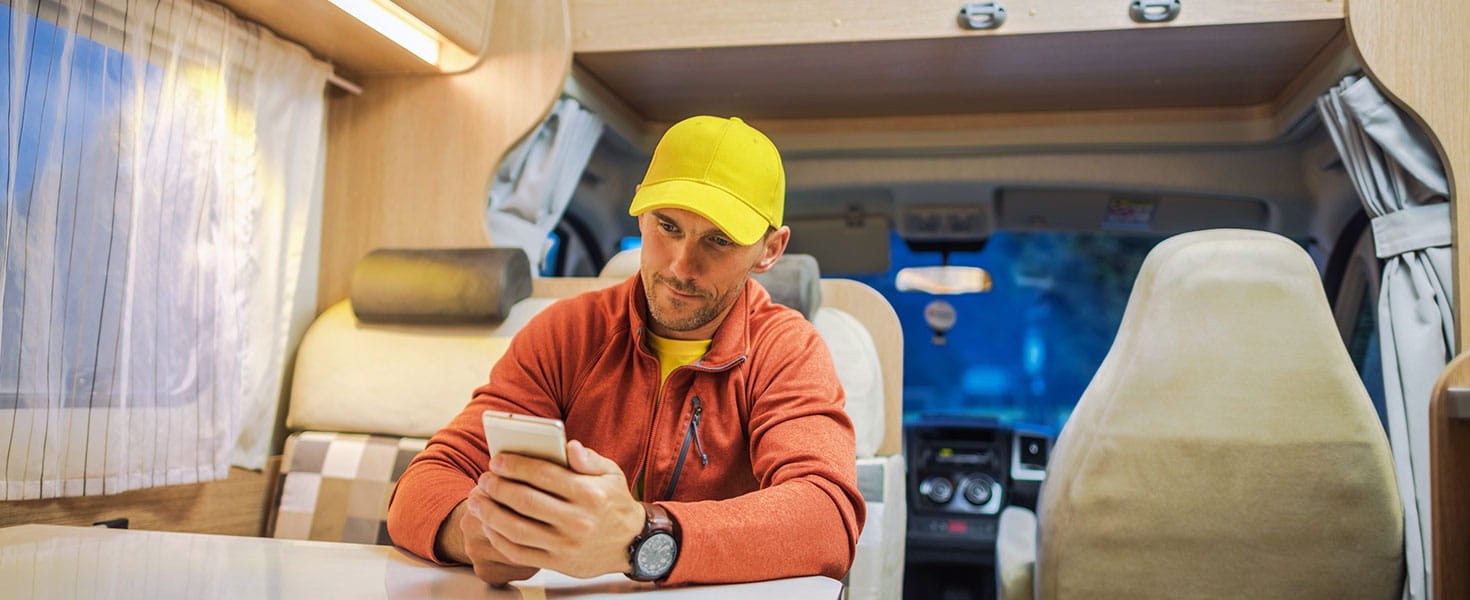Camping used to be a way to disconnect from the pressures of daily life. Today’s reality, however, is that some of us want—and, in some cases, need— to stay in touch with family, friends and even work while we’re enjoying the wonders of nature via RV. So, here’s a primer to getting online while traveling the long and winding road.
TRY THE EASY WAY
Perhaps the simplest way to stay connected away from home is a public Wi-Fi hotspot. Available everywhere from coffeeshops to campgrounds, these connections are usually free and might work well enough for simple tasks such as checking email or looking up weather forecasts.
Be aware, however, that these setups can be overwhelmed in times of peak demand. They also depend on how far you are from the Wi-Fi antenna—for example, the signal that seems workable outside the RV park’s office might be totally unusable back at your campsite.
HAVE A PLAN B
Accept the fact that accessing the internet from your RV won’t be as effortless as it is at home. Also keep in mind that what works well at one stop may not work at all at the next. Bottom line: Have options if you really need to get online.
MAKE A PERSONAL CONNECTION
The next best thing to copping free commercial Wi-Fi is making the most of the country’s widespread cellular data coverage. With the coming of new 5G service, these connections can be surprisingly fast. The easiest way to take advantage of this option is to use your existing smartphone as a personal Wi-Fi hotspot that will allow you to get online with your tablet or laptop.
BUY SOME SIMPLE HARDWARE
If you plan to spend a lot of time online, it may be worth your while to invest in a separate data-only portable Wi-Fi hotspot (aka: MiFi/Jetpack), available from most wireless carriers. These small portable Wi-Fi routers generally offer a faster, always-on connection you’re used to accessing at home. Many can also be connected to an external antenna for enhancing weak cellular signals. Expect to pay several hundred dollars for the device, plus the cost of a monthly data plan. Prices vary by provider.
CHECK FOR COVERAGE
Which major cellular service provider you choose (for example, AT&T, T-Mobile, Verizon and so on) can also impact your ability to get online. All carriers have areas of spotty service, so it pays to check out coverage maps for the areas where you’ll be traveling. Also consider having data plans with more than one carrier as a backup, and inquire whether they can be activated on a month-to-month basis or, if you snag a really great data plan, consider biting the bullet to keep it active year-round. Also pay attention to each plan’s data caps and other restrictions.
SIT OUT SATELLITE
While satellite internet is undoubtedly the next big thing, it’s not quite ready for prime time. True, it can keep you connected in parts of the country where nothing else works, but it requires serious hardware and an unobstructed view of the southern sky, something that’s not always possible. The introduction of low Earth-orbiting satellite networks will make RV satellite internet more viable, but those systems are still years away.
For more information on how to connect while on the road, check out the Mobile Internet Resource Center, rvmobileinternet.com, a community-funded, unbiased resource for learning about mobile internet options for US-based travelers.


















